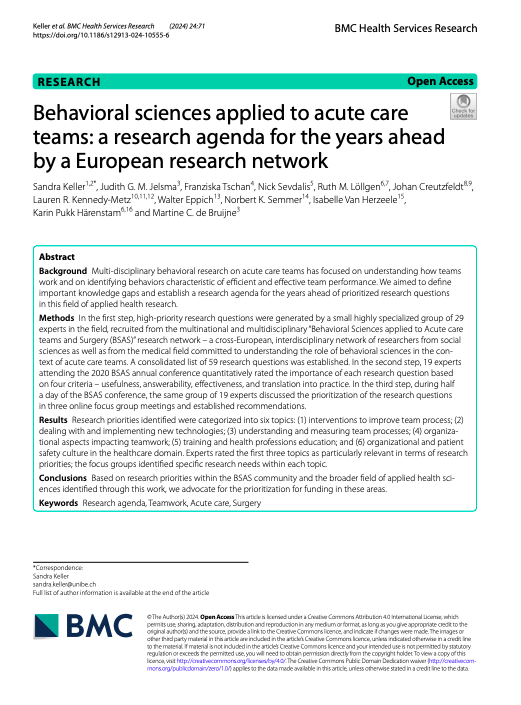New Publication from Our Network: Biofeedback in team settings: A systematic review of applications and outcomes (Yang et al., 2025)
Biofeedback uses physiological signals to make people more aware of their internal states and improve performance. While it has been widely studied for individuals, its use in teams is still emerging. This review brings together findings from 30 studies to understand how biofeedback works in team settings and how it can enhance team effectiveness. We propose a simple framework with three stages: collecting physiological data, processing it, and delivering feedback to the team. The studies show that biofeedback can help teams communicate more evenly, stay aware of group dynamics, and work together more effectively. It also strengthens shared feelings such as connectedness, empathy, and social presence. However, most research focuses on pairs rather than larger teams and relies mainly on visual feedback. We highlight these gaps and suggest ways to design better biofeedback systems that support teamwork in real-world contexts, including healthcare simulation training.
Keywords: Biofeedback, Teams, Physiology, Team processes, Team states, Team outcomes
Authors: Jingwen Yang, Travis J. Wiltshire, Elwira A. Hałgas, Kyana H.J. van Eijndhoven, Josette M.P. Gevers
Journal: Computers in Human Behavior Reports

New Publication from Our Network: Barriers and facilitators to the use of virtual wards —a systematic review of the qualitative evidence (Cucurachi et al., 2025)
Journal: International Journal for Quality in Health Care (2025)
Link: Read the article

New Publication from Our Network: Measuring Negative Emotions and Stress Through Acoustic Correlates in Speech — A Systematic Review (Schewski et al., 2025)
Can our voices reveal how we feel under stress or emotional load?
This systematic review by our team at the University of Bern and the University Hospital of Bern explores how speech—specifically acoustic features like pitch, intensity, and speech rate —can serve as a non-invasive method to assess negative emotions, stress, and cognitive load.
Reviewing 38 articles across four major databases, we found that prosodic features (such as fundamental frequency) were the most informative for identifying negative emotions, stress, and cognitive load. Specifically, anger was associated with elevated fundamental frequency (F0), increased speech volume, and faster speech rate. Stress was associated with increased F0 and intensity, and reduced speech duration. Cognitive load was linked to increased F0 and intensity, although the results for F0 were overall less clear than those for negative emotions and stress. The evidence for emotions like fear and anxiety remains mixed, highlighting the need for more targeted research.
This work offers key insights for both researchers and practitioners interested in emotion recognition, affective computing, and stress monitoring in real-world settings.
Link to the full article, published in PLOS One: https://journals.plos.org/plosone/article?id=10.1371/journal.pone.0328833
New Publication by Tool4Teams PI’s on Behavioral sciences applied to acute care teams
Dear readers,
we would like to share a new article with the title “Behavioral sciences applied to acute care teams: a research agenda for the years ahead by European research network” published by members of the “Behavioral Sciences applied to Acute care teams and Surgery (BSAS) research network. This collaborative effort has defined knowledge gaps, setting the stage for a dynamic research agenda and the development of 12 DC positions.
Six key topics were identified, emphasizing interventions to improve team processes, dealing with and implementing new technologies, understanding and measuring team processes, organizational aspects impacting teamwork, training and health professions education, as well as organizational and safety culture. By identifying these critical knowledge gaps, the BSAS community advocates for targeted funding in these areas. Furthermore, 12 projects for doctoral candidates have been developed, with the aim to close the gaps in research and to enhance our understanding of teamwork in acute care and surgical settings.
If you want to know more about the doctoral candidates’ projects, click here.
Link to the article, published in BioMed Central (BMC):


